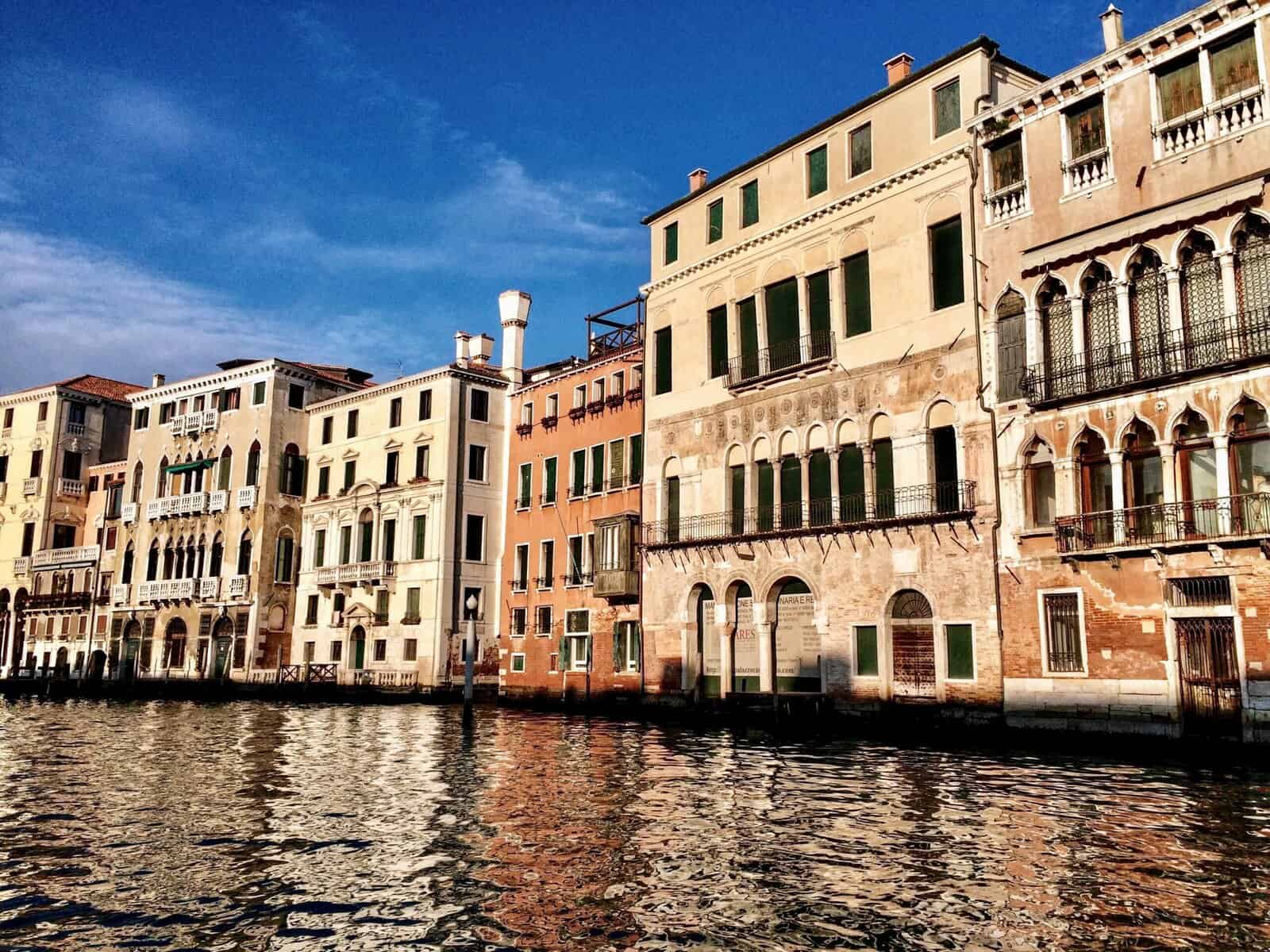Cannaregio, Venice’s Most Relaxing District
Threading through Venice’s dim alleys and unexpected dead ends requires an act of faith. Even for those who enjoy labyrinths, navigating the city can be demanding. Venice’s northern district of Cannaregio offers a respite. Long, straight canals run above a major thoroughfare, making it the easiest sestiere to navigate. Wide sidewalks called fondamenti stretch along parallel canals, connected by a mercifully regular grid of streets and bridges. By day, the neighborhood offers a quiet place to soak up the sun and sky. In the evening, cafés, bars, and restaurants spill out across the fondamenti and onto moored boats.
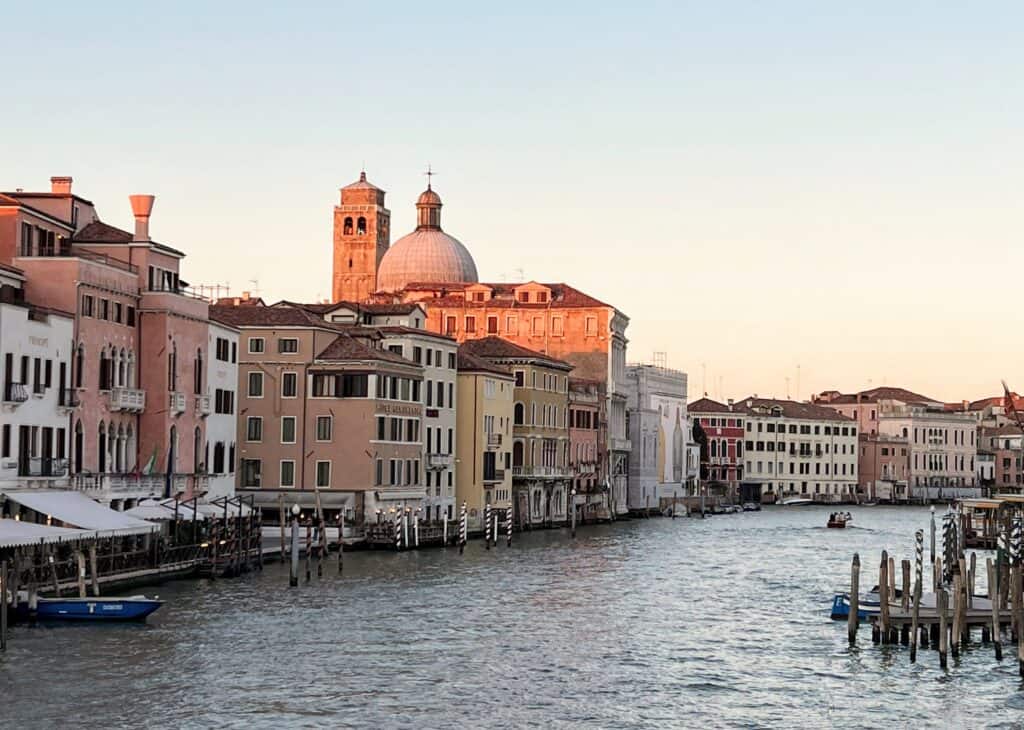
Cannaregio offers a wider range of accommodations than most districts in Venice, from tiny AirBnbs to large hotels. The latter cluster at the district’s western end, where a bridge across the Grand Canal and many of the city’s vaporetto lines converge in front of Santa Lucia train station. The convenient transportation options make this area popular with tourists. A bustling high street, the Strada Nova, runs along the bottom of Cannaregio, just north of the Grand Canal. Laid out in the 19th century specifically to provide easy pedestrian access from the train station to the Rialto Bridge, the thoroughfare sees a mixture of residential and tourist traffic.
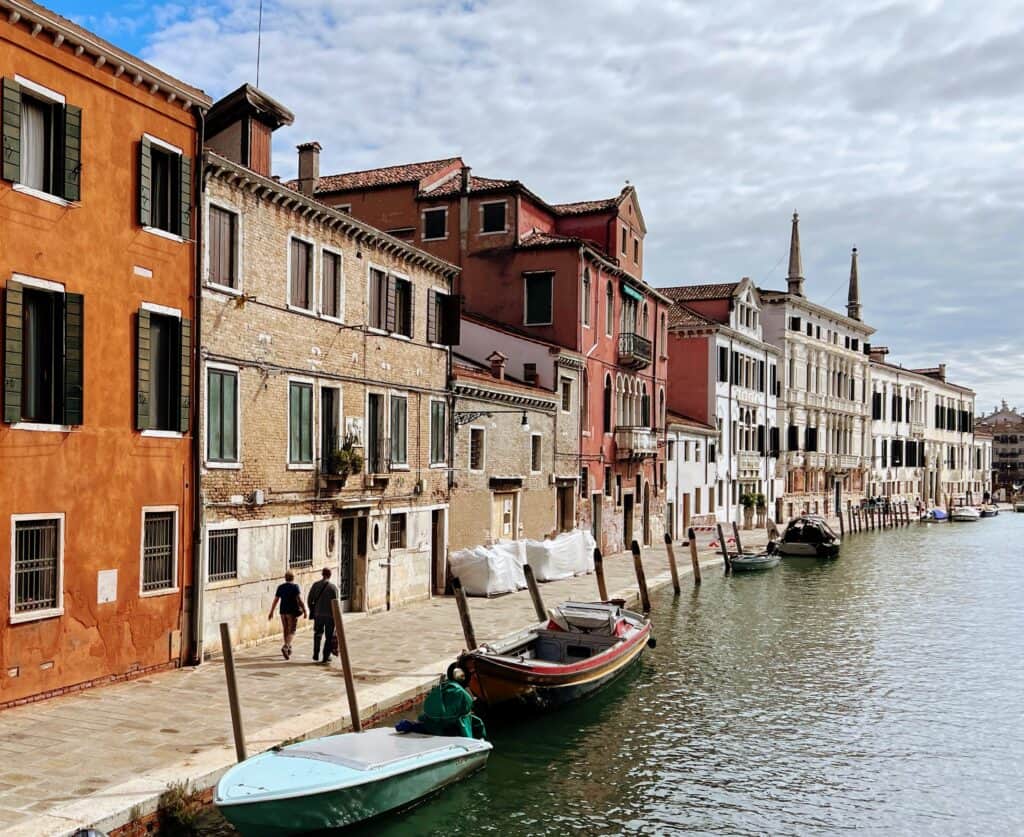
Above the Strada Nova, Cannaregio becomes more atmospheric. The upper stretches make an ideal base for visitors who don’t mind a bit more walking in order to get away from the crowds.
All sites are marked on our Google map. Click on a link below to jump to a specific section.
Upper Cannaregio
Fondamenti and Nightlife
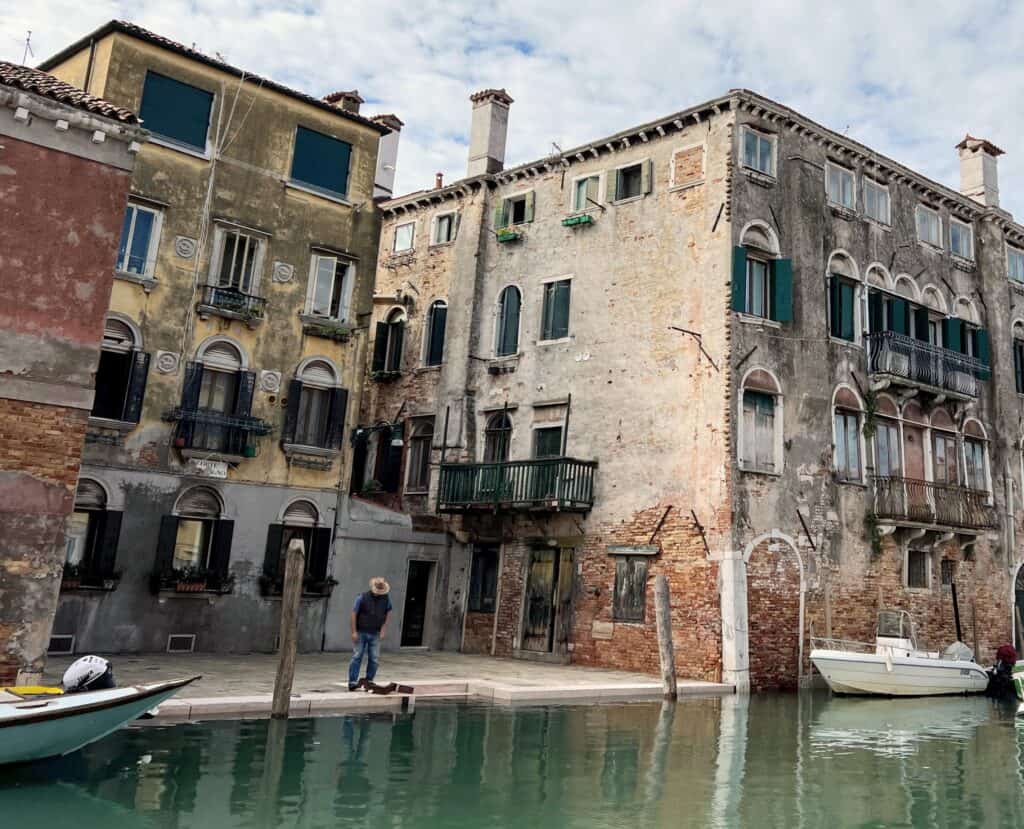
Cannaregio refers to the reeds which once dominated the marshy area. The district’s northern stretches weren’t drained and developed until after the 11th century. Free from the cramped conditions and heavier traffic of the city center, the area grew into a thriving middle-class neighborhood. Workshops spread out from the ground floor buildings onto wide sidewalks, with housing space above.
Somewhat sleepy by day, the area picks up quickly at sunset. A neighborhood stalwart, restaurant-bar Il Paradiso Perduto regularly features live music; other popular choices include Vino Vero and Al Timon.
Jewish Ghetto


Considering its impact on cities around the world, Venice’s Ghetto Ebraico occupies a surprisingly small area. Jewish community leaders lobbied for a place where they might be allowed to purchase property. Venetians recognized an opportunity for greater tax revenue and easier loans from Jewish money-lenders. In 1516, the government agreed to set aside a tiny islet in Cannaregio. Two guarded gates permitted access to the area from dawn to sunset; otherwise residents remained both protected by and imprisoned within high walls.
The Jewish Museum of Venice offers tours of the neighborhood, as well as exhibits on the Ghetto’s history and culture. For information, see the Ghetto di Venezia website.
Campo dei Mori and House of the Camel
Besides the house of Venetian painter Tintoretto, the Campo dei Mori also holds statues of three Moorish merchants and their servant. The brothers arrived around 1112 from Greece, and probably lived in the nearby Palazzo Mastelli, better known as the Palazzo dello Cammello.
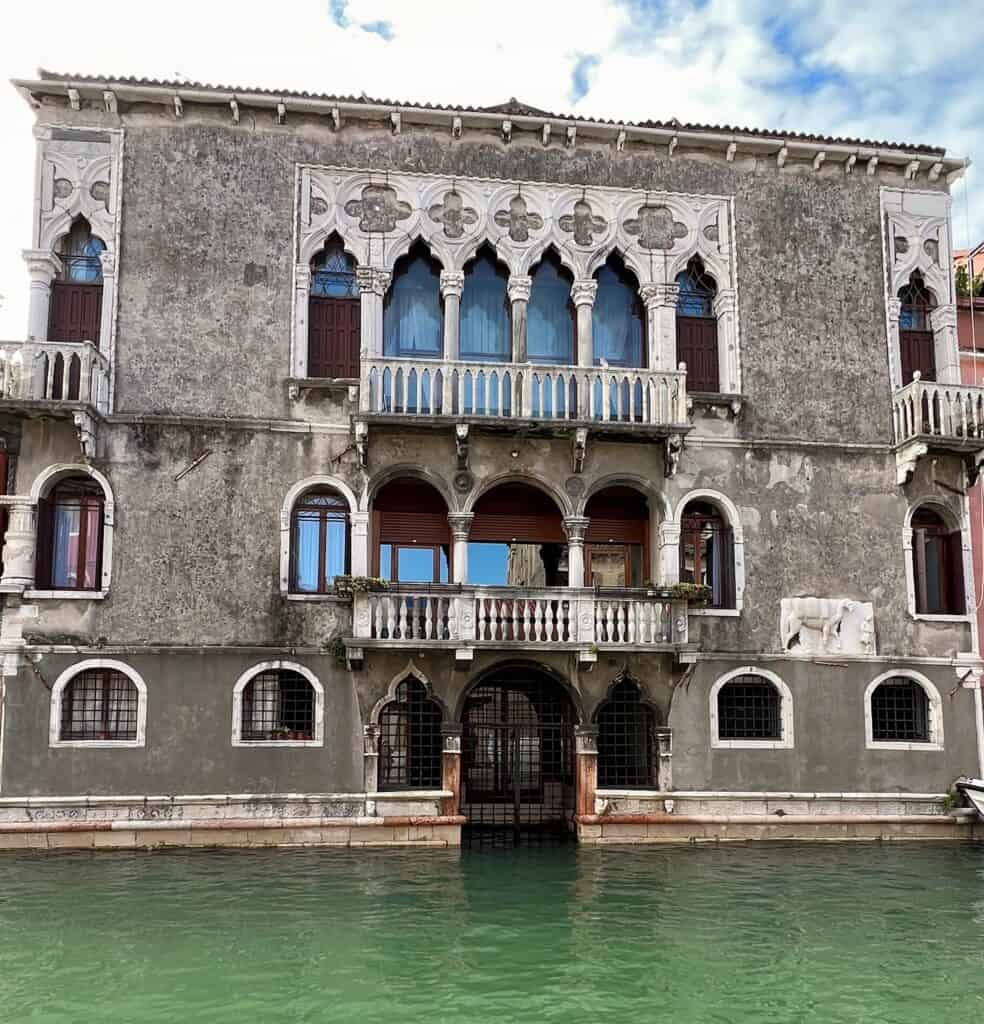
The façade features a relief of a turbaned figure with a camel as well as a wall fountain which provided fresh water until fairly recently. Legends about the palace range from sentimental (one brother pledged to build a house with a camel on it so his beloved could find him) to ghostly (all bells within the walls chimed together at the same time every day for several months).
Madonna dell’Orto
One of the loveliest Gothic churches in Venice, the Madonna dell’Orto is best known for its links to Tintoretto. The local artist painted some of his most arresting works here, including the monumental altarpieces. Along with the Scuola Grande di San Rocco, this is the best place to see his work. Visitors can pay respects to his tomb: Tintoretto’s family was also buried here, including a daughter who painted.
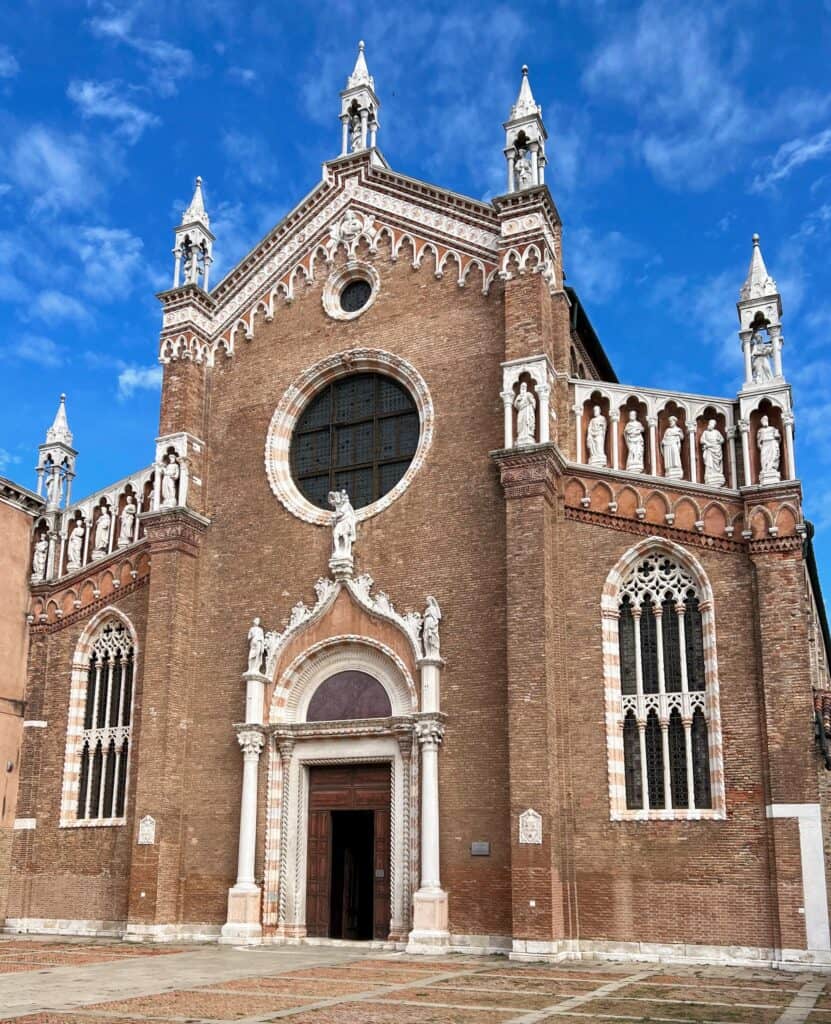
Side chapels dedicated to powerful Venetian families house more art, including a Titian. Bellini’s “Madonna With Child” was stolen from Valier Chapel for third time (!) in 1993.
Entry €3, Monday-Saturday 10-5 & Sunday 12-5.
Church and Convent of Sant’Alvise
Once an integral – if mysterious – part of Venetian life, most of the city’s numerous convents were eventually closed. On the northwestern edge of Cannaregio, Sant’Alvise offers a rare glimpse into the “pleasant prison” inhabited by so many women.


Venice’s unusually low marriage rates (less than 50% for the nobility) led to the creation of dozens of nunneries, with varying levels of autonomy. Founded in 1388 by doge’s daughter Antonia Venier, Sant’Alvise retains most of the convent’s original layout. The church houses a Tiepolo triptych.
For information on visiting, see the Chorus Association website.
I Gesuiti (Santa Maria Assunta)
The site’s original monastic complex, built in 1155, included a hospital for Christian pilgrims and warriors en route to and from the Holy Land. In 1657 the cash-strapped Venetian Republic sold the property to the Jesuits. The interior takes the native fondness for illusions to unprecedented lengths. Even critics like John Ruskin found the trompe l’oeil marblework intriguing, although one writer described the building as “table-clothy”. Besides marble curtain swags and damask-wrapped columns, the church houses one of Titian’s most powerful paintings (Martyrdom of Saint Lawrence) and an early Tintoretto.
Note: the Gesuiti (a.k.a Santa Maria Assunta) is easily confused with the Gesuati (a.k.a. Santa Maria del Rosario, an 18th century church in Dosoduro).
On and Around the Grand Canal
Santa Maria di Nazareth (Chiesa degli Scalzi)
Both of Venice’s most accomplished Baroque architects contributed to the Scalzi church: Guiseppe Sardi created the façade, and Baldassare Longhena designed the structure behind it. Unlike his plan for the Santa Maria della Salute, where a simple layout anchors the ornate décor, Longhena’s work here is a tidal wave of grape marble and gilt.
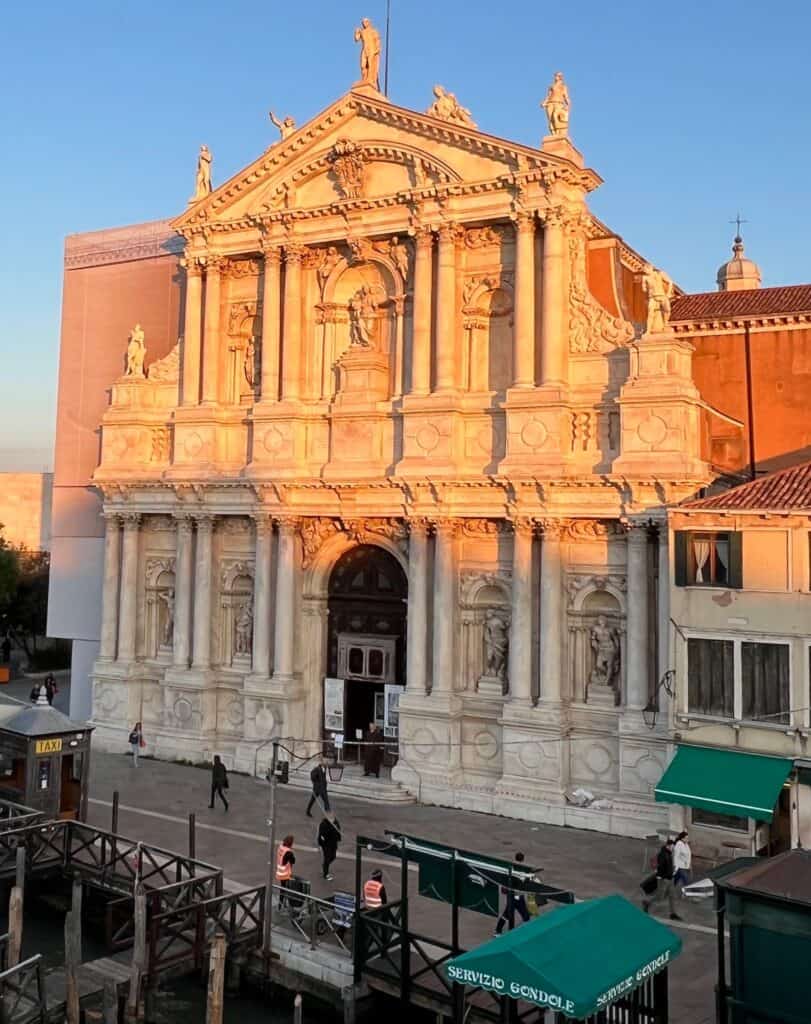
Tiepolo painted the ceiling vaults, and the side chapels dedicated to noble families include the tomb of Venice’s last doge, Ludovico Manin. After the “oh my” interior, the large garden behind the church is surprisingly serene. The grapevines yield about a thousand bottles’ worth of wine per year.
Entry free, daily 7-1 & 2:30-6:45.
Ca’ d’Oro
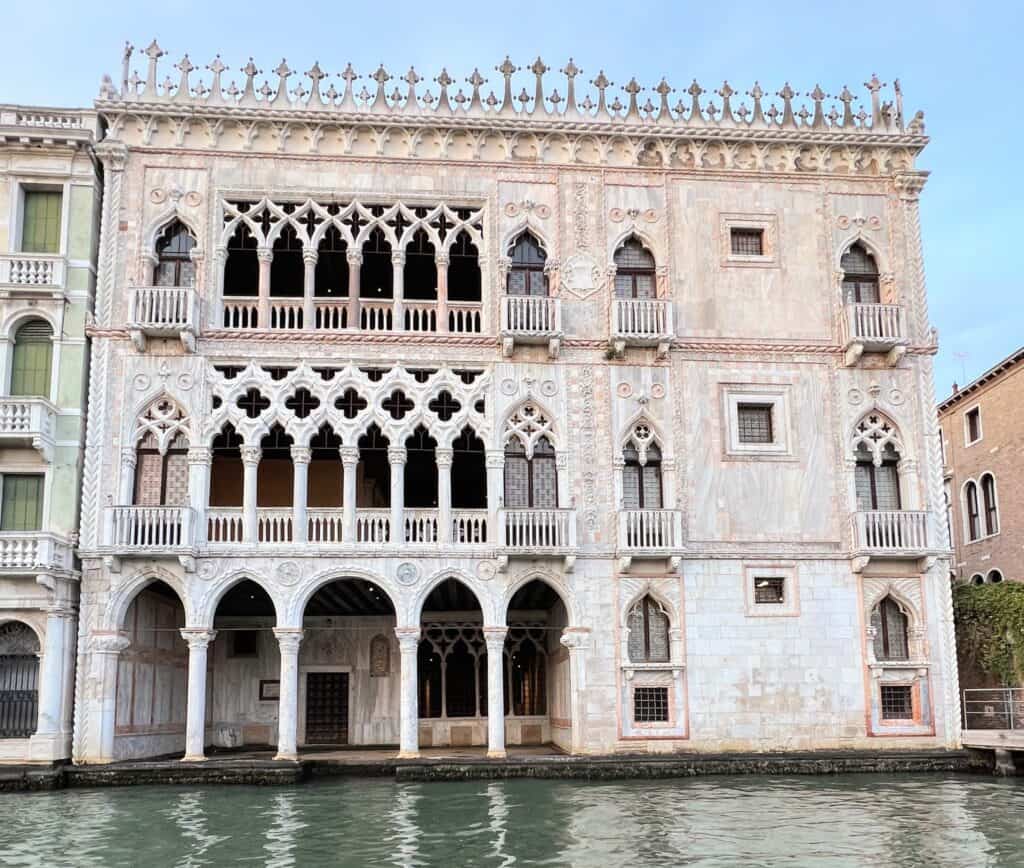
Even without its original cladding of gold and powdered lapis lazuli, the Ca d’Oro’s virtuoso façade remains a highlight of the Grand Canal. The dazzling-but-not-blinding marble version we see today, courtesy of Baron Franchetti’s 19th century restoration, uses just enough color to highlight the intricate shapes and create a shimmering effect.

The interior is equally spectacular. Gothic, Byzantine, and Islamic styles mingle in mosaics and carvings, with framed views of the Grand Canal on every level. Upper floors house art by the likes of Mantegna, Titian, and Bernini.


We recommend purchasing the combined ticket for the Ca d’Oro and Castello’s Palazzo Grimani. Together, they represent the best of Venetian palaces.
Casino di Venezia: Ca’ Vendramin Calergi
Venice’s official casino moved to the Ca’ Vendramin Calergi in the 1950’s, but the tradition goes back for centuries. Always passionate for statistics, Venetians engaged in “games of chance” as early as the 13th century. Casinos grew organically, as small establishments for socializing: the word casino originally meant “little house” in the sense of a getaway. Sometimes they were known as ridotti, or private places.
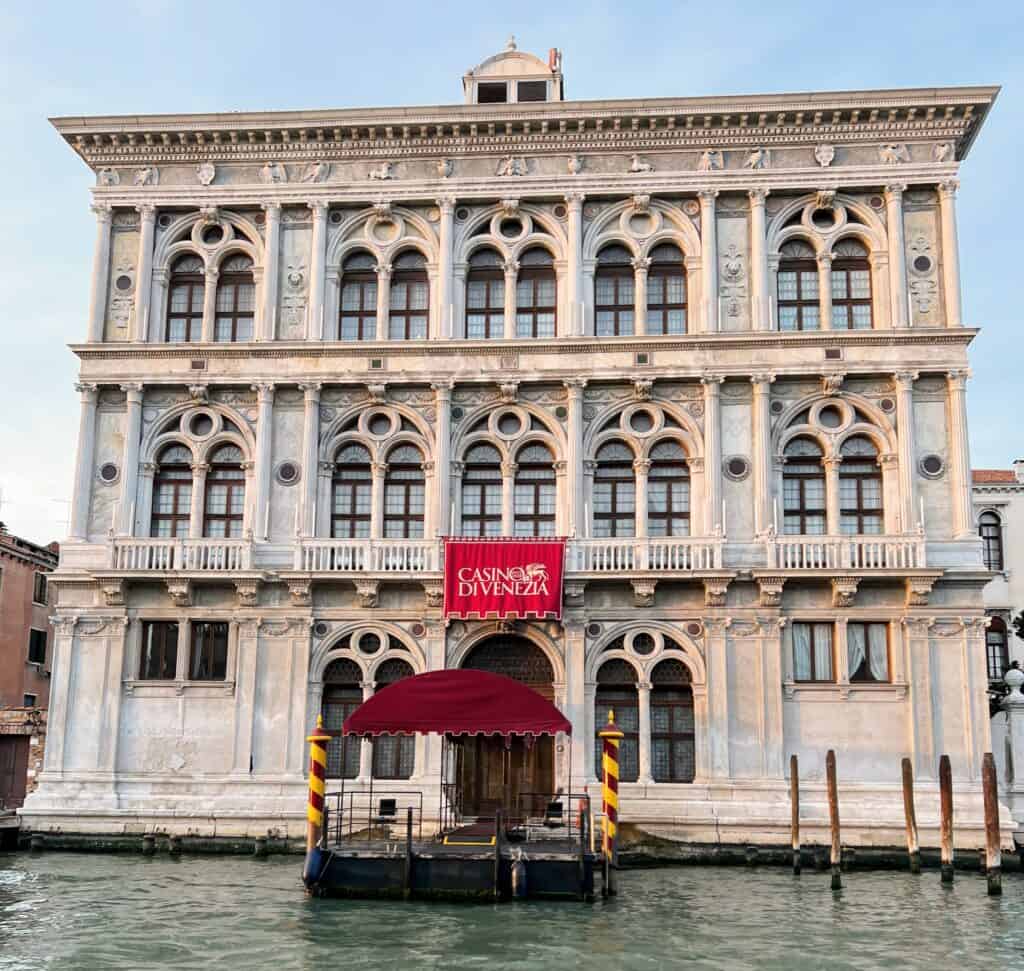
After several centuries of attempts to regulate and even ban them, the government gave in and created the continent’s first state-sponsored casino, Il Ridotto, in 1638. Patrons often wore masks to preserve anonymity, and casinos became synonymous with intrigue of all kinds – and inspiration for countless artists and writers.
The current Casino di Venezia offers a selection of classic games, along with a bar and restaurant. The landmark building, designed by Venetian Renaissance architect Mauro Coducci, also houses a Wagner museum. (The composer died while staying upstairs.) For visiting information, see the Casino di Venezia website.
Teatro Italia (SPAR Grocery Store)
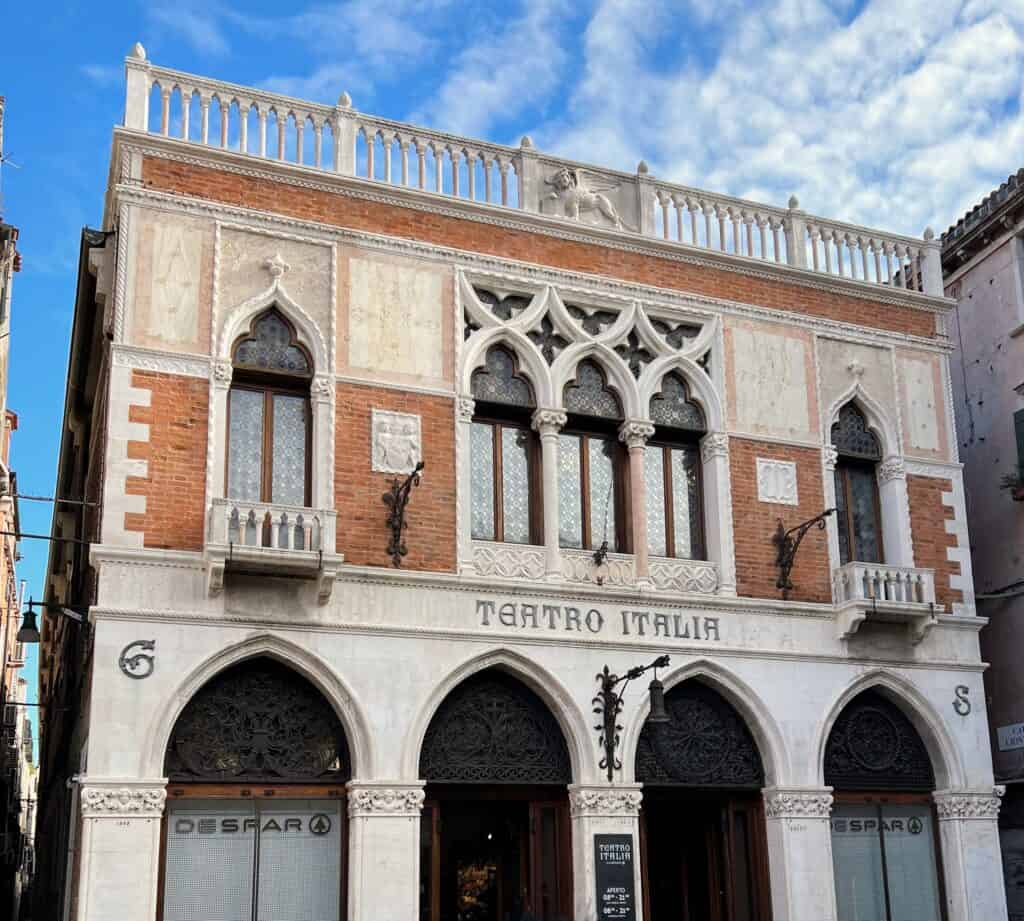
In a curious juxtaposition of historic architecture and contemporary life, grocery aisles stretch under a frescoed ceiling on the Strada Nova. The SPAR supermarket chain’s controversial renovation of a Neo-Gothic cinema crystallizes conflicting demands in La Serenissima.
Santa Maria dei Miracoli

Descriptions of the Santa Maria dei Miracoli inevitably include the words “jewel box” – and for good reason. Built in 1491 to house an allegedly miraculous painting of the Virgin Mary, the Miracoli features a simple, dramatic layout.


The Madonna rests on a high platform above a monumental staircase, sheltered by a coffered wooden barrel vault. There are no frescoes to compete with the painting, just patterned marble walls and statues. This is one of the most beloved churches in Venice. For information on visiting, see the Chorus Association website.
Isola di San Michele
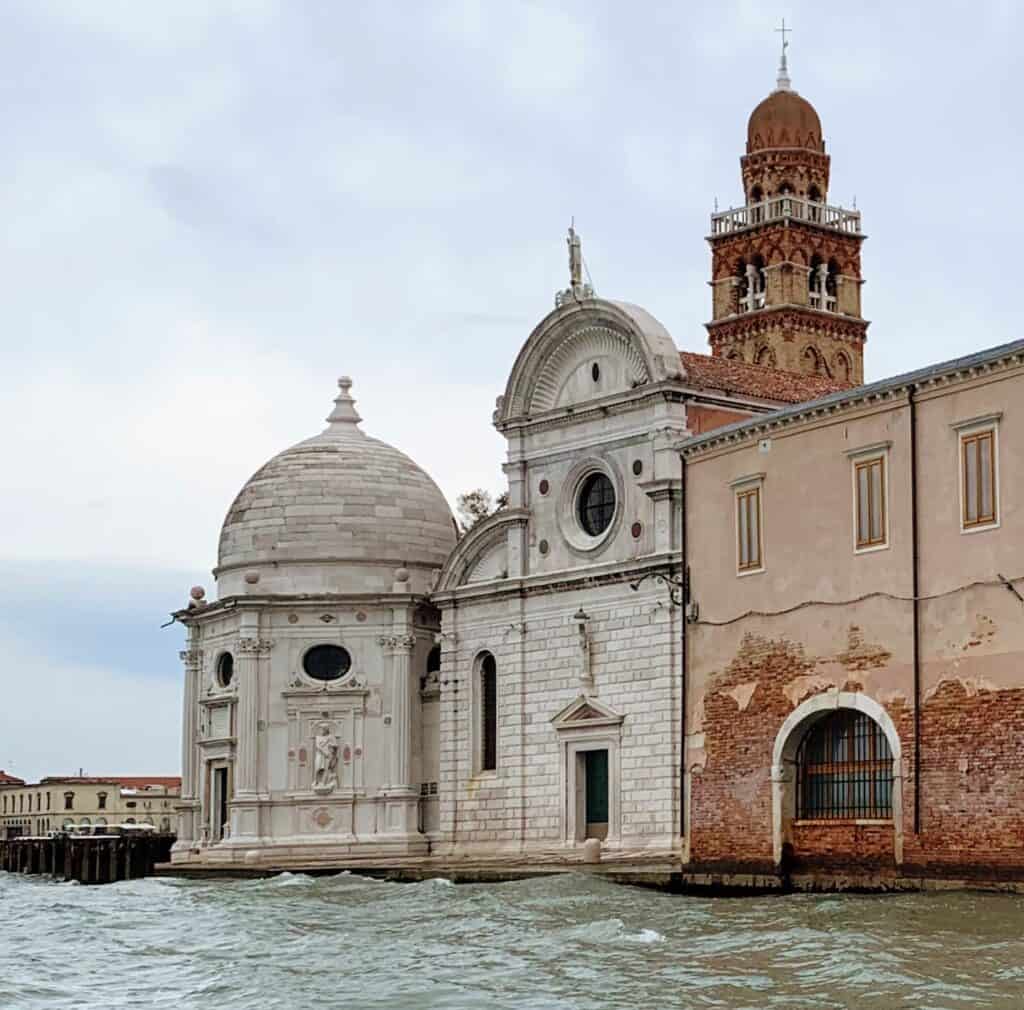
North of Cannaregio, the cemetery island of San Michele makes a peaceful getaway. Visitors can wander among the gardens and funerary monuments, or head straight for the Church of San Michele in Isola. Architect Mauro Codussi created a uniquely Venetian version of the Renaissance style, and his sparkling white façade on the church here would later inspire Palladio’s work.
Cemetery hours April-September 7:30-6, October-March 7:30-4. Church follows the same schedule but closes between 12 and 3.
Vaporetto Guide
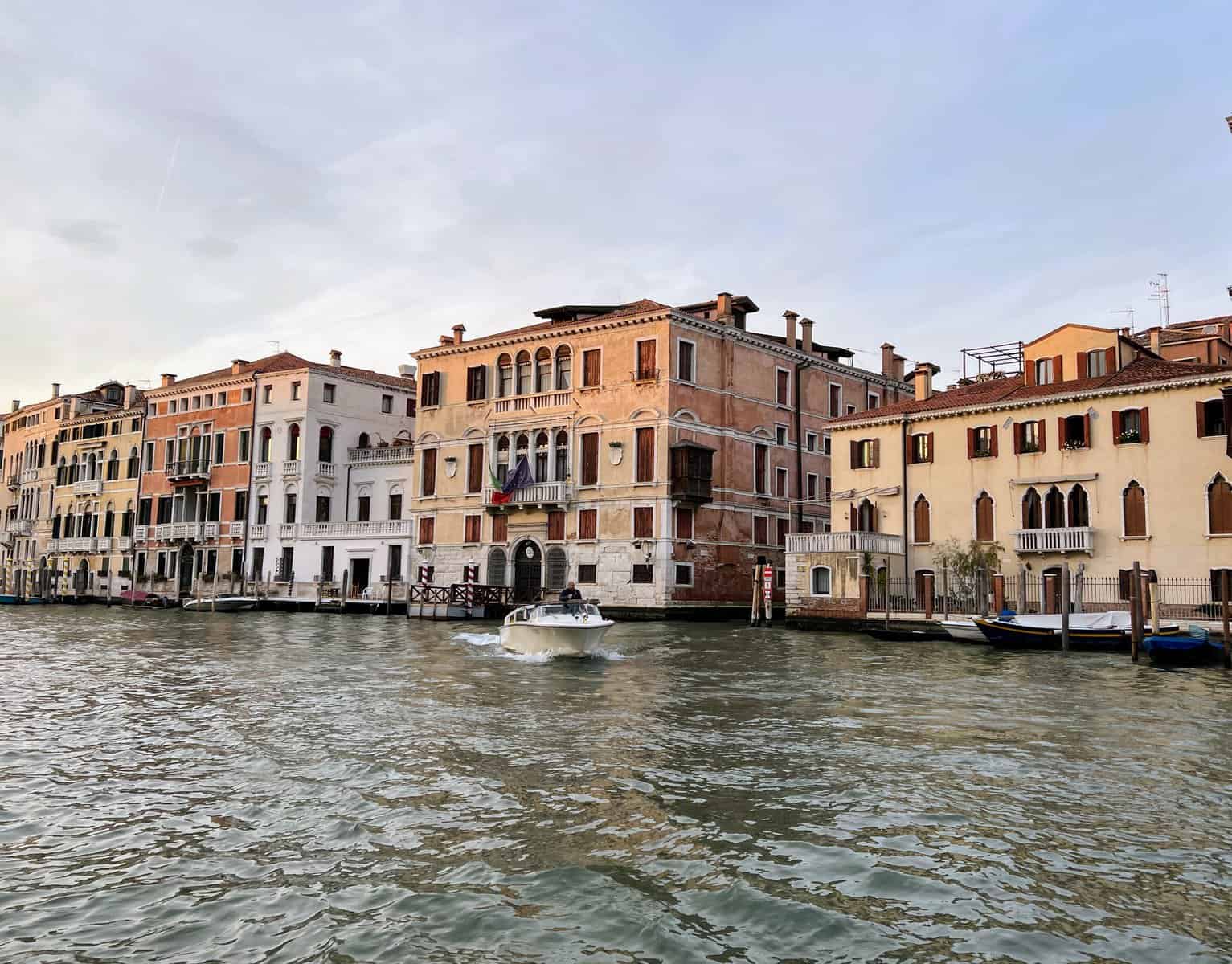
Cannaregio has two major waterbus hubs.
At the Santa Lucia train station, the “Ferrovia” stop includes the following lines:
1: all stops along Grand Canal, then along Castello and out to Lido islands
2: around Santa Croce port, then zigzags between Dosoduro and the islands of Sacca Fisola/Giudecca/San Giorgio Maggiore, then limited stops along the Grand Canal back to Santa Croce.
3: express to Murano
4 & 5: various permutations circle central Venice, then go out to Lido islands. 4 route includes San Michele and Murano.
6: to Lido via Dosoduro and Castello
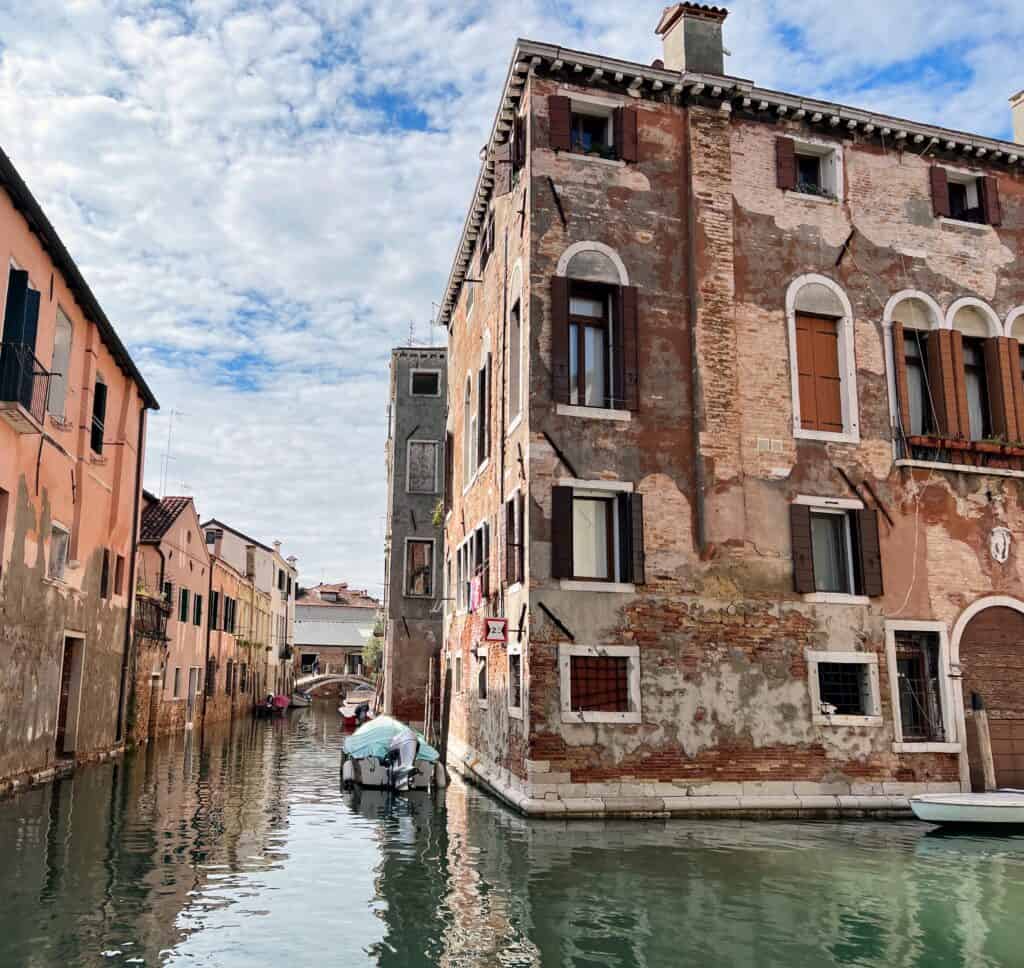
On the northern edge, the “Fondamente Nove” vaporetto hub makes an ideal base for trips to other islands, with direct links to San Michele, Murano, Burano, and Torcello.
A: to San Marco via Ferrovia & Grand Canal OR airport
B: to Giudecca via Lido, Castello, & San Marco OR airport
4 & 5: various permutations circle central Venice, then go out to Lido islands. 4 route includes San Michele and Murano.
12 & 13: outer islands (Murano, S. Erasmo, Mazzorbo/Burano/Torcello)
22: northern Cannaregio & Castello
For details, see the map of all vaporetto lines linked on the official website.
Avoid long lines at vaporetto ticket booths by purchasing passes at a nearby tabacchi or using the app. See the ACTV website for more information and ticket prices.
Further Reading
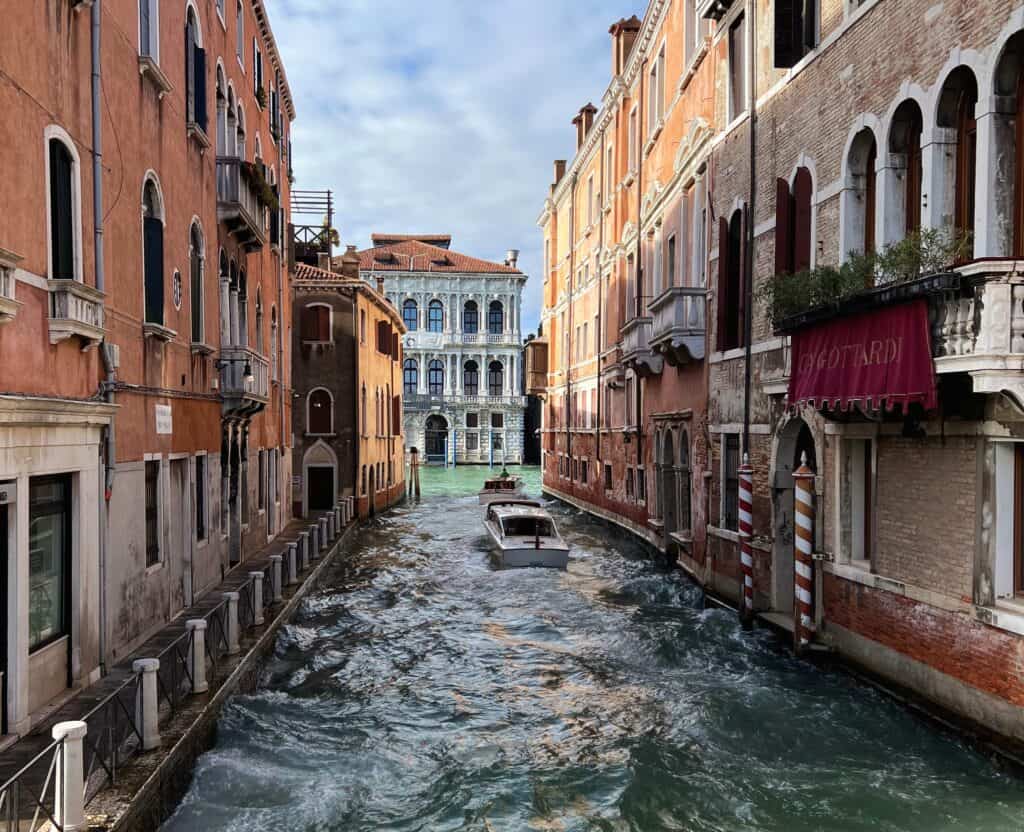
Our other posts on Venice include:
A Guide to Venetian Gothic Churches and Palazzos
A Guide to Venice’s Eclectic and Historic Churches
Palladio’s Architecture in Venice
Venice’s San Polo District: The Rialto and Beyond

